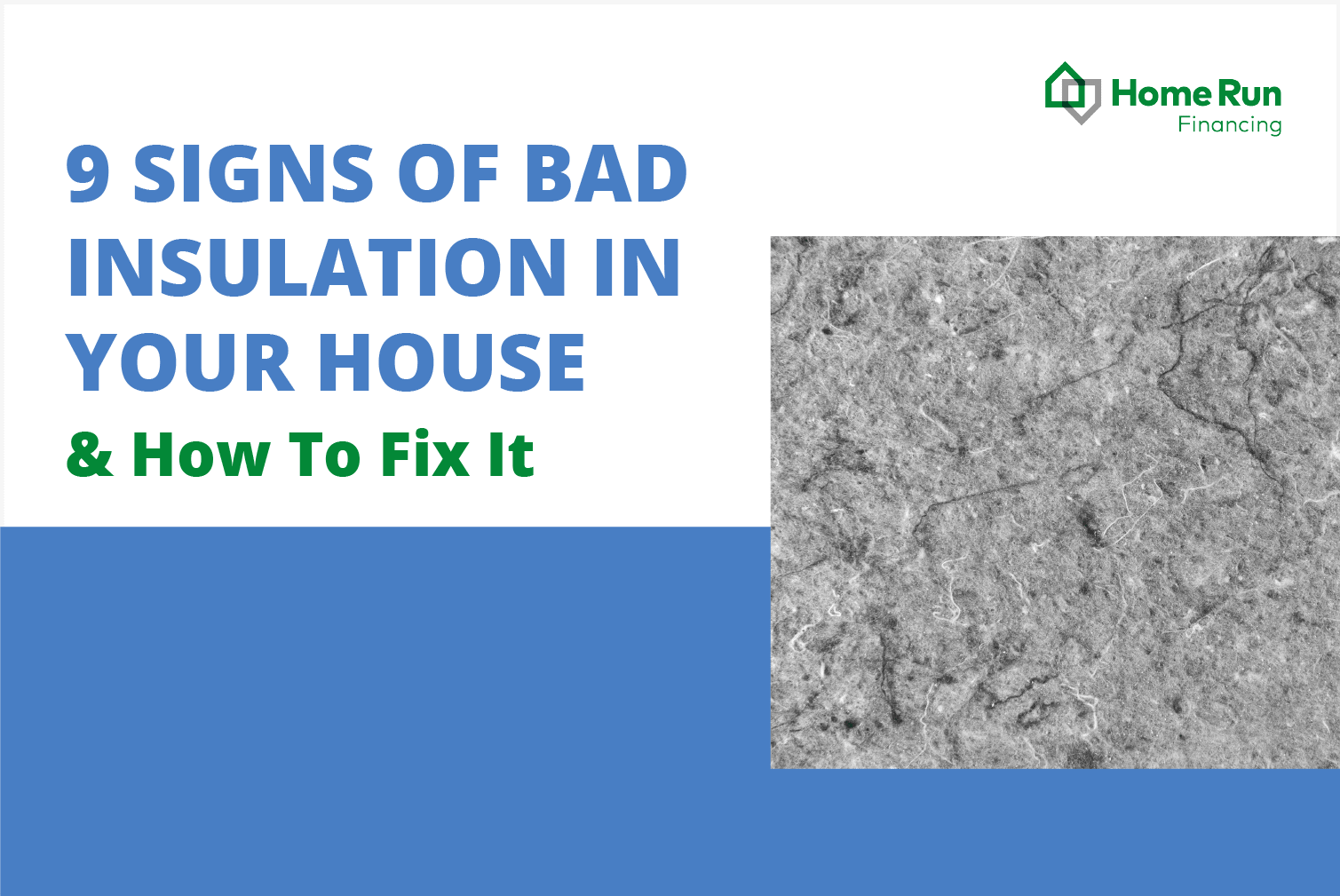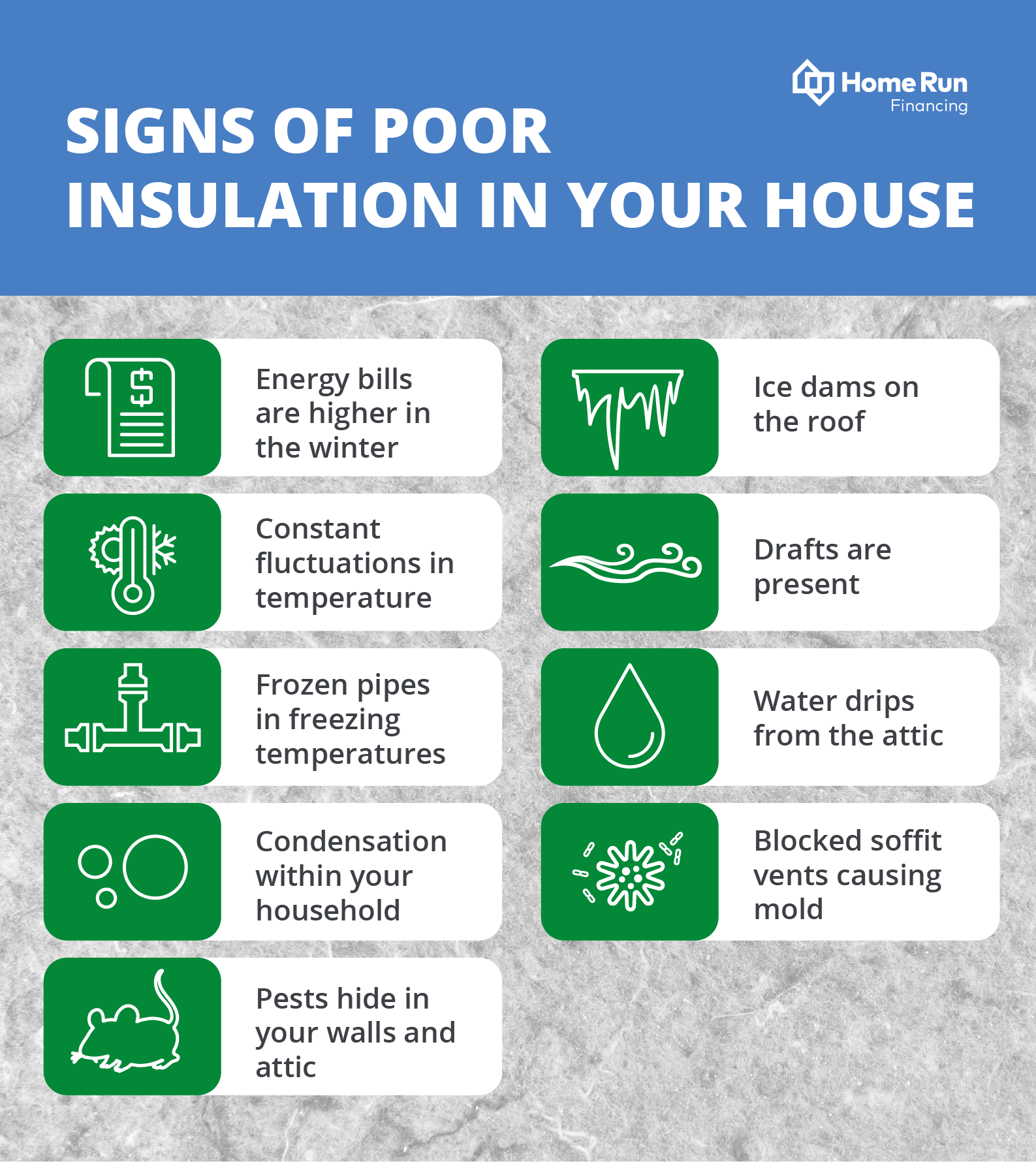
9 Signs of Bad Insulation In Your House and How To Fix It
Bad insulation costs money, creates unsafe conditions, and reduces your comfort. If you have poor insulation in your home, take action. First, learn how to identify signs of poor insulation. It pays to know what bad insulation looks like and how you can fix problems with home insulation.
Table of Contents:
- Does insulation go bad?
- Factors that reduce home insulation lifespan
- How to tell if your house is well insulated
- What if you can’t afford insulation replacement?
Does insulation go bad?
Yes, insulation can go bad. If properly installed and well-maintained, you can expect it to last for decades. However, without proper application and care, spray foam, fiberglass batts, rigid foam board and mineral wool can all fail. The biggest cause of bad insulation is moisture. It reduces the materials’ integrity and causes mold growth. Mold breaks down fibers over time and creates adverse health problems.
Other ways insulation goes bad include puncturing or cutting, exposure to sunlight’s ultraviolet radiation, infestations, and leaks. Dust and dirt will reduce the effectiveness of insulation. Certain situations compress the insulating material, making it far less effective.
Factors that reduce the lifespan of home insulation
Insulation is made to last. However, it can deteriorate. If any of these apply, check for signs of bad insulation.
- Age of your house. Older insulation may not be as effective.
- Climate. Hot, moist environments put insulation at greater risk of mold damage.
- Quality of material and installation. The material used to insulate your house, often depending on how it was installed, will affect its performance.
- Construction and repairs. Poor household renovations can damage existing insulation.
How to tell if your house is poorly insulated

If you’re wondering what bad insulation looks like, check to see if it is moldy, wet, or discolored. It may be unevenly dispersed and thin in areas. If you see these problems, take action right away. Poor household insulation can cascade into expensive, uncomfortable, and even dangerous problems.
Here are a few problems you may face.
1. Energy bills are higher in the winter
You pay more for energy when your house leaks heat. Your HVAC system works overtime to keep temperatures even when without adequate insulation. Before you replace the HVAC system in your house, invest first in improving your insulation.
How to fix it: Inspect your insulation. This includes weatherstripping around doors and windows. Repair, replace, and add to insulation as appropriate.
2. Constant fluctuations in temperature
Poor insulation makes it harder for your HVAC to maintain an even temperature. Your house gets warm when it’s on, then quickly cools when it is off as warm air escapes.
How to fix it: It’s impossible to stress enough that adequate insulation will make all the difference.
3. Frozen pipes in freezing temperatures
Poor insulation exposes your plumbing to extreme temperatures. Frozen pipes can burst. The resulting damage can be extensive and expensive.
How to fix it: If you can’t fix the insulation in your whole house, pay attention to the areas around your plumbing.
4. Condensation within your household
Warm air holds more water. When warm air touches a cold surface, the vapor turns back into water. That’s what happens when you step out of a hot shower and your mirrors fog up. If you don’t have proper insulation and ventilation, water vapor can build up inside your house and condense on windows or behind your walls, causing mold.
How to fix it: Home improvements will help. Fans that vent moist air out of your attic will also reduce moisture in your home.
5. Pests hide in your walls and attic
If rodents can make it inside your house, they will find that your insulation makes an ideal nest. Rodents bring insects and disease inside and wreak havoc with their feces and chewing.
How to fix it: Inspect your attic, basement, and walls to look for signs of poor insulation and pests. Call an exterminator. They’ll also have good advice for preventing future infestations and closing gaps.
6. Ice dams on the roof
When your attic insulation isn’t sufficient, heat escapes through the roof. Snow melts during the day and then refreezes at night. The next day, the water will not be able to run off the roof because the ice formed overnight has created a dam. Water may quickly destroy roofing materials.
How to fix it: Install roof baffles that encourage snow to break up and fall. Low voltage roof heaters can prevent ice from forming. And yes, add more insulation to your attic.
7. Drafts are present
One of the signs of poor insulation in your house is drafts. This indicates you have gaps that can leak warm air out and suck cold air in.
How to fix it: Check around doors, windows, and anywhere you have pipes or wires entering your home. These are likely areas for gaps fixable with insulation and weather stripping.
8. Water drips from the attic
Water coming in from your attic is an ominous sign. Your roof might be leaking. Water dripping from the attic could also be due to condensation.
How to fix it: A leaking roof needs the attention of a professional to patch or replace it. Insulation and fans should keep moisture at bay.
9. Blocked soffit vents causing mold
The vents in your eaves under your roof allow air to flow into the attic. This increases fresh air circulated to reduce moisture. When clogged with dirt and debris, mold can spread.
How to fix it: Clean soffit vents during annual gutter cleaning. Regular maintenance will help you avoid trouble.
What if you can’t afford to replace your insulation?
Fixing insulation problems can sometimes be expensive, especially in an older home. You may want to look into how to pay for expensive home repairs. One great option is Property Assessed Clean Energy financing. Use the money already invested in your home without having a credit report pulled.
